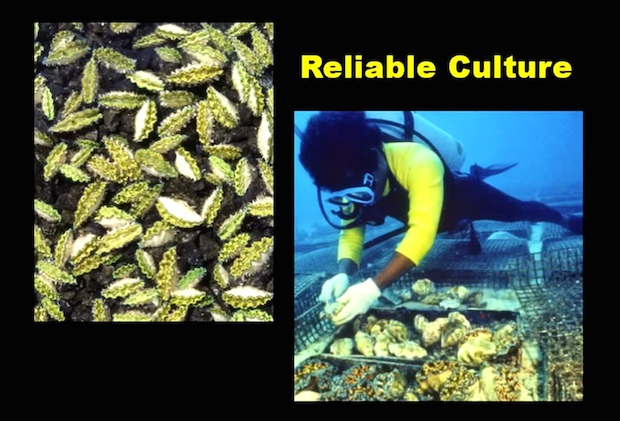Gerald Heslinga is one of the world’s foremost experts on all things giant clam, especially in regards to the mariculture of Tridacna species. In this presentation Mr. Heslinga makes the case for the culture of giant clams being a solution for creating a great supply of sustainable seafood, and loads of jobs for coastal island communities.
The key to the sustainability of giant clams as a source of food is symbiosis, turning our beloved bivalves into not-so little solar powered seafood farms. Compared to other types of seafood, giant clams do not need to be fed during their lifetime whereas all other types of farmed fish need to be fed a source of protein which has to come from somewhere. Furthermore, the filter feeding activities of the giant clams actually leads to cleaner reef water than that which flows into it.

But it’s not all blue skies for giant clams, when we are not actively trying to farm and grow them, other humans are actively harvesting them wherever they live in the ocean. A large Tridacna gigas can yield over thirty pounds of meat from a single animal and since it can’t swim away or defend itself, giant clams are easy targets for both sustenance fisherman and factory ships looking for an easy meal/score.
The answer to these challenges is to culture giant clams in great numbers, leveraging the value of these species for food security, for commercial sushi grade market, for tourism and more. There’s even a nod to Acro Al who’s being farming giant clams inland, in a closed water system. We don’t want to steal anymore of this video’s thunder but if you want to know more about the place that giant clams have in the world, you’ll definitely learn a thing or two by watching this fascinating TED talk.



